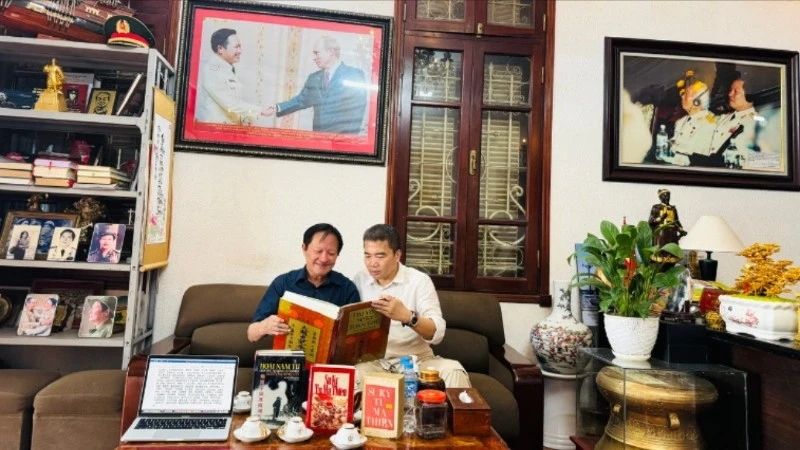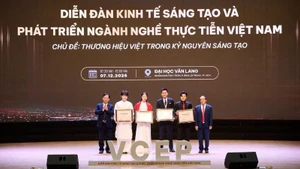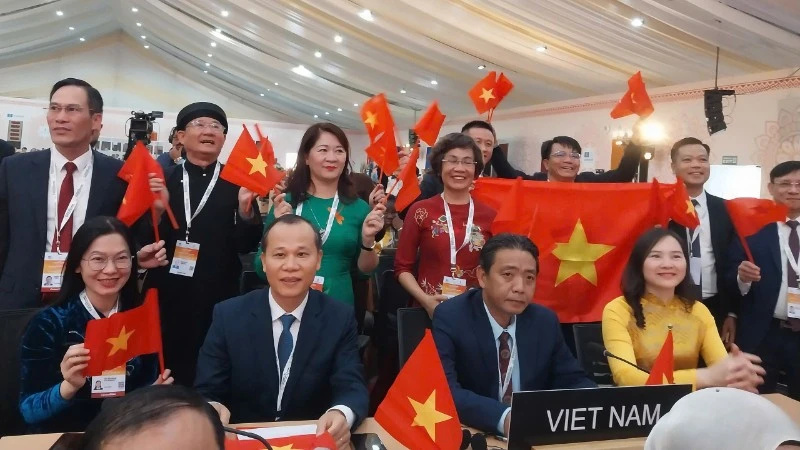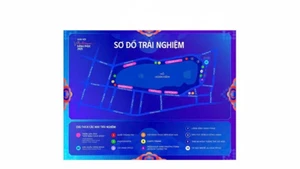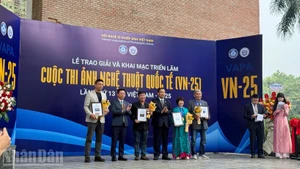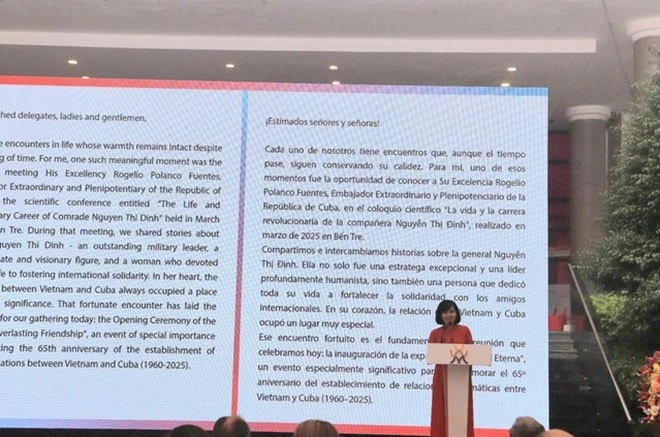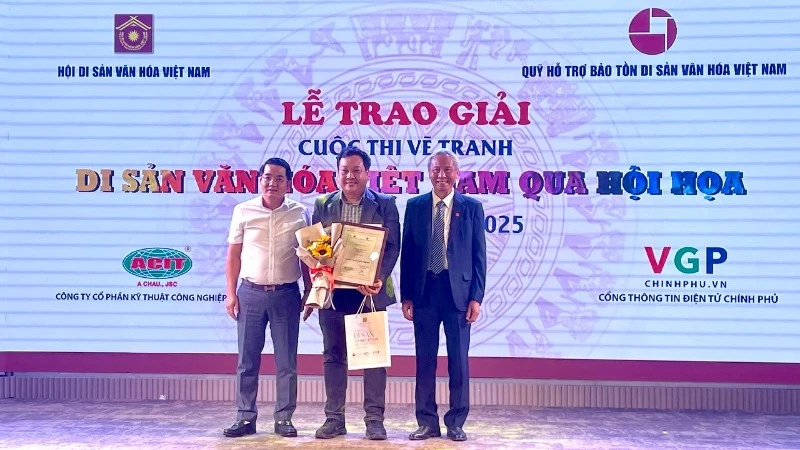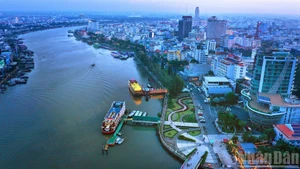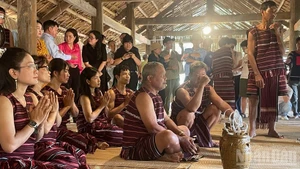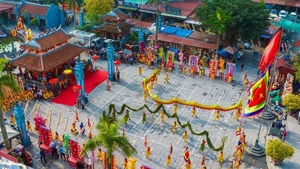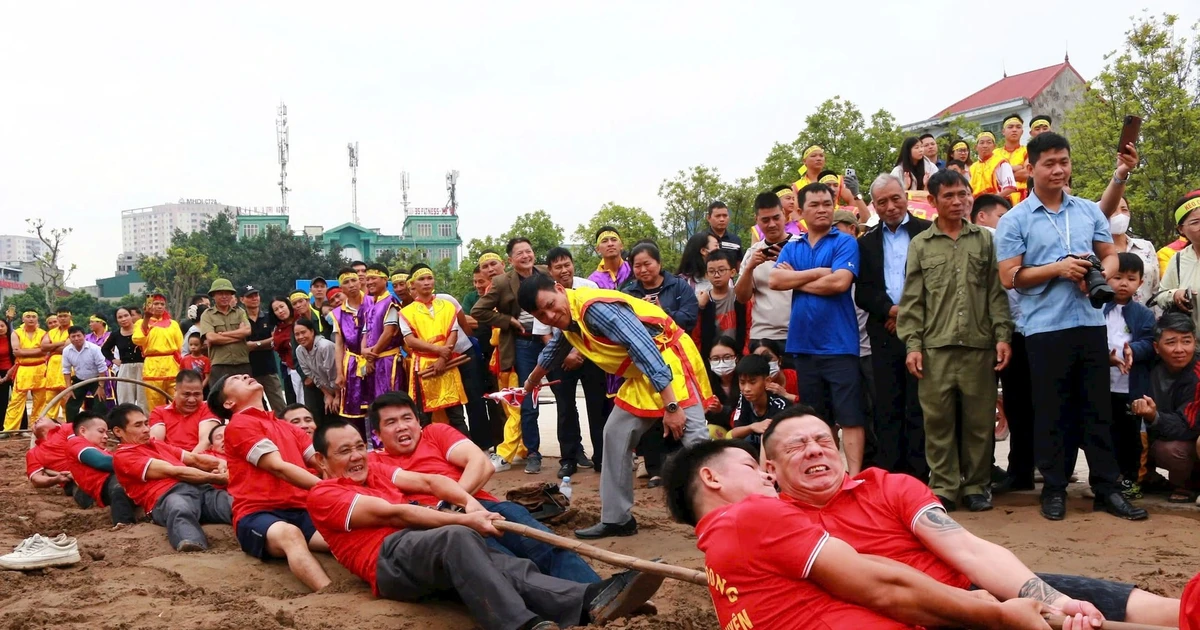Considered a sacred symbol of the will to defend the nation, the magic crossbow is often viewed through a cultural-mythological lens. The image of the crossbow is clearly depicted on the Ngoc Lu bronze drum (and also on the Co Loa bronze drum): when firing the Co Loa bronze arrow, the archer steps on the restraining cord to hold the arrow shaft, just as the cord secures the shaft in the legendary crossbow.
Based on archaeological evidence, historical records, and studies in modern military science, General, Academician, Doctor, and Hero of the People's Armed Forces Nguyen Huy Hieu, and weapons expert and engineer Vu Dinh Thanh have proposed a new theory: the magic crossbow was real - a weapon that utilised gravity and possessed destructive power far beyond the understanding of its time.
Magic crossbow as a historical entity, not just legend
General Nguyen Huy Hieu (former member of the Party Central Committee, former Deputy Minister of National Defence) and weapons engineer Vu Dinh Thanh have conducted in-depth research and proposed several scientific arguments, suggesting that the magic crossbow was not merely a folkloric legend, but possibly a decisive factor in the victory against Qin invaders, contributing to the collapse of this powerful empire in the late 3rd century BCE.
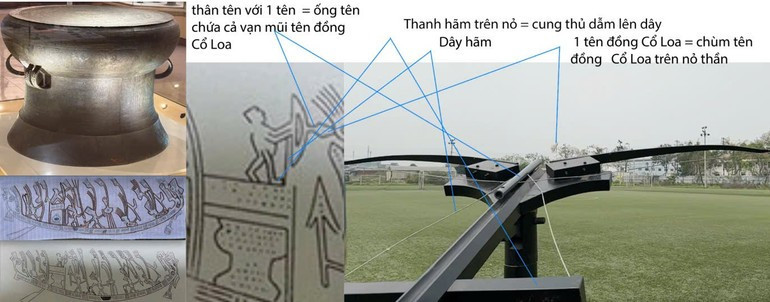
Exploring this idea, engineer Vu Dinh Thanh, who reconstructed the "magic crossbow" that fires Co Loa bronze arrows, shared that our ancestors had a unique method of archery, not only different from ancient China but distinct from the rest of the world: instead of firing directly at the target, they fired upwards and used the earth’s gravitational pull to accelerate the falling bronze arrows. A specially designed aerodynamic structure caused the arrows to spin around their axis, significantly increasing their penetrating power.
In 2022, Vu Dinh Thanh was granted an exclusive patent by the Ministry of Science and Technology for his invention: “Multi-arrow crossbow, with the crossbow force applied to an arrow tube containing multiple small arrows.” This serves as scientific and technological validation for the operating principle of the magic crossbow’s multi-arrow firing mechanism.
According to General Nguyen Huy Hieu, drawing on his combat experience during the war against the US, he compared this phenomenon to cluster bombs, which were capable of wide-area attacks and high lethality. He affirmed: “We faced such weapons directly in battle, so we have every reason to believe that if our ancestors mastered similar principles, the magic crossbow could indeed have been a historical reality.”
Since 2005, numerous archaeological discoveries at Co Loa Citadel (Dong Anh Commune, Ha Noi) have uncovered tens of thousands of bronze arrowheads buried within the inner citadel area, dating back more than 2,300 years. Notably, a weapons foundry spanning nearly 1,000 square metres has also been found, containing numerous intact moulds and bronze furnaces.
This serves as clear evidence that the ancient Vietnamese had built a large-scale, well-organised weapons manufacturing centre capable of mass production. Experts regard this as one of the most significant ancient military relics in Southeast Asia.
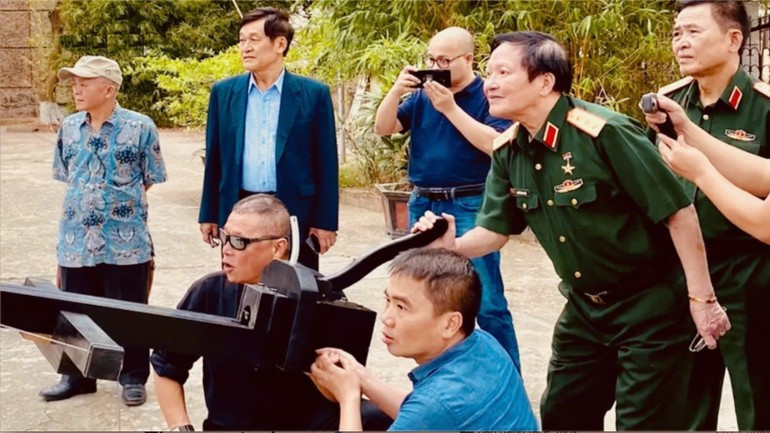
History should be approached with an open mind and evidence-based thinking
ccording to General Nguyen Huy Hieu and engineer Vu Dinh Thanh, if Co Loa Citadel had ever been captured, this weapons foundry would have been destroyed or repurposed. The fact that the foundry remains intact is a crucial sign indicating that Co Loa was never taken by the enemy, and that the victory over the Qin forces was indeed real.
Another noteworthy point is that no trace of the magic crossbow or Co Loa bronze arrows was found in the tomb of Zhao Tuo (Trieu Da), excavated in Guangdong, China, nor do they appear in any military or cultural records of the Zhao dynasty, which lasted nearly 100 years thereafter.
Researchers assert that if Zhao Tuo had truly conquered Au Lac, as some legends suggest, then he certainly would have possessed and utilised the magic crossbow. However, current archaeological evidence does not support this. On the contrary, the weapons system at Co Loa has remained intact, further reinforcing the hypothesis that Zhao Tuo never captured the citadel.
The magic crossbow has long been viewed as part of the My Chau–Trong Thuy legend — more symbolic than historical. However, with archaeological data, scientific analysis, and assessments by military experts and historians, it is now time to reassess this matter.
General Nguyen Huy Hieu concluded: “If a military victory truly helped our people safeguard their territory, culture, and identity 2,300 years ago, then we must recognise it as part of historical truth.”
The lessons drawn from reconstructing and studying the magic crossbow go beyond ancient military history — they affirm the creative capacity, independent thinking, and self-reliant spirit of the Vietnamese people during critical moments in our history.
